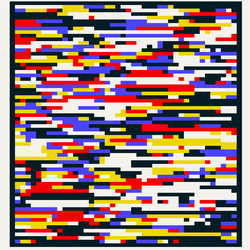This page showcases a few tiny code examples in JavaScript + HTML, written by Jos Vromans. The amount of bytes is the amount of characters that will be loaded in the web browser. This includes the html.
When clicking on one of the items, you will go to a page that only serves a very minimal html file, yet it renders an artwork. You can inspect this with your browser tools (check the network tab). For the 'Generative Fern' example, the network tab will show that only 230 bytes of data was loaded.
This is experimental code that does not follow the best HTML and JavaScript standards. Instead, as much code as possible has been stripped away, as long as the code still executes in most web browsers. These examples can still be improved, there are always tricks to get rid of a few more characters. You can always send improvements to my email address or message me on X.














